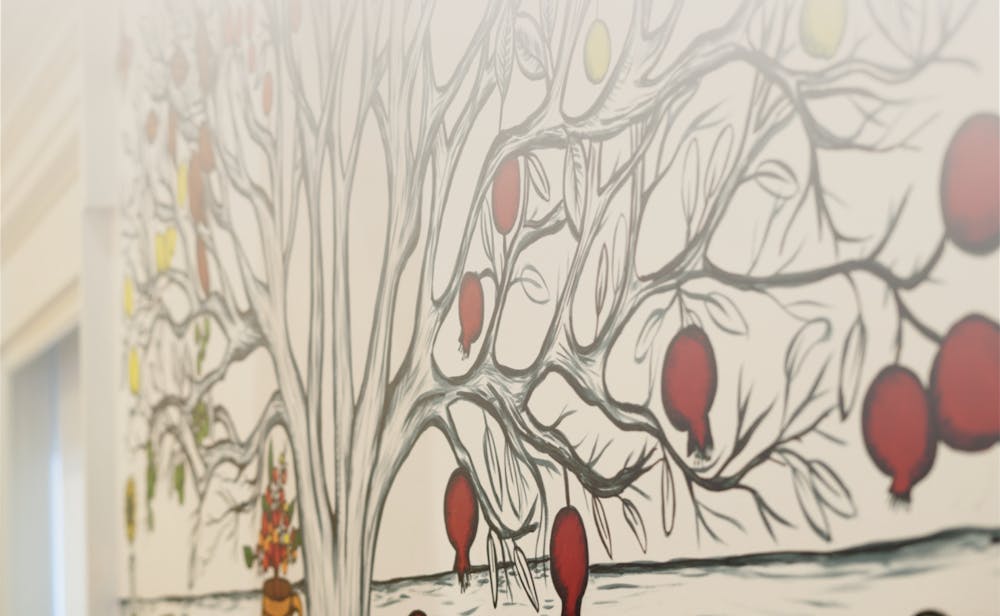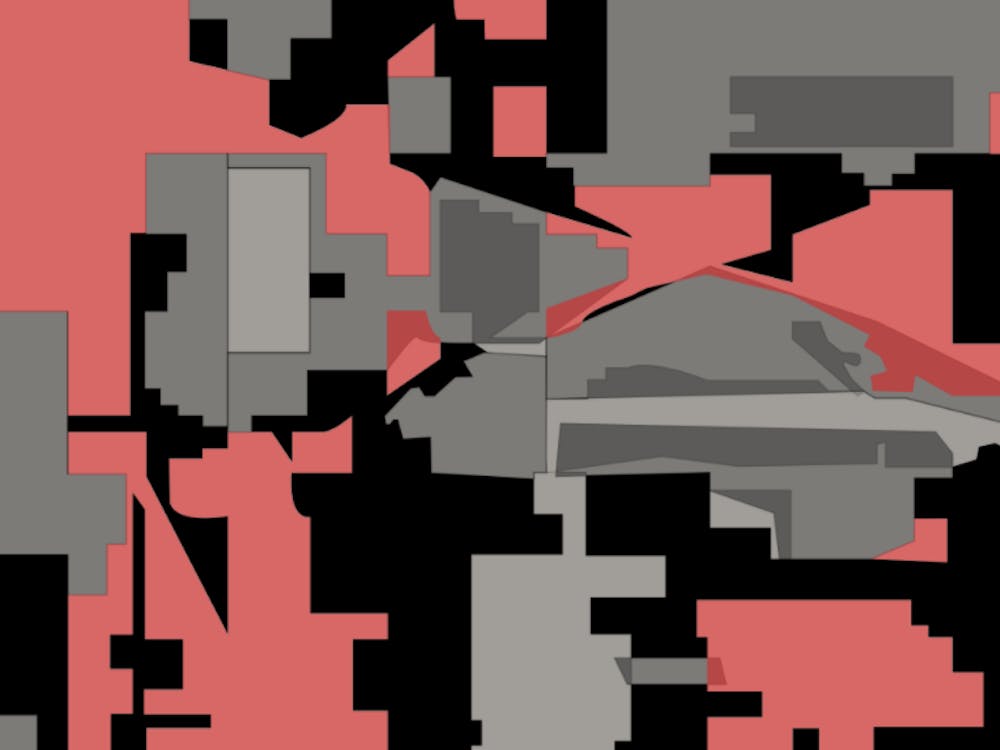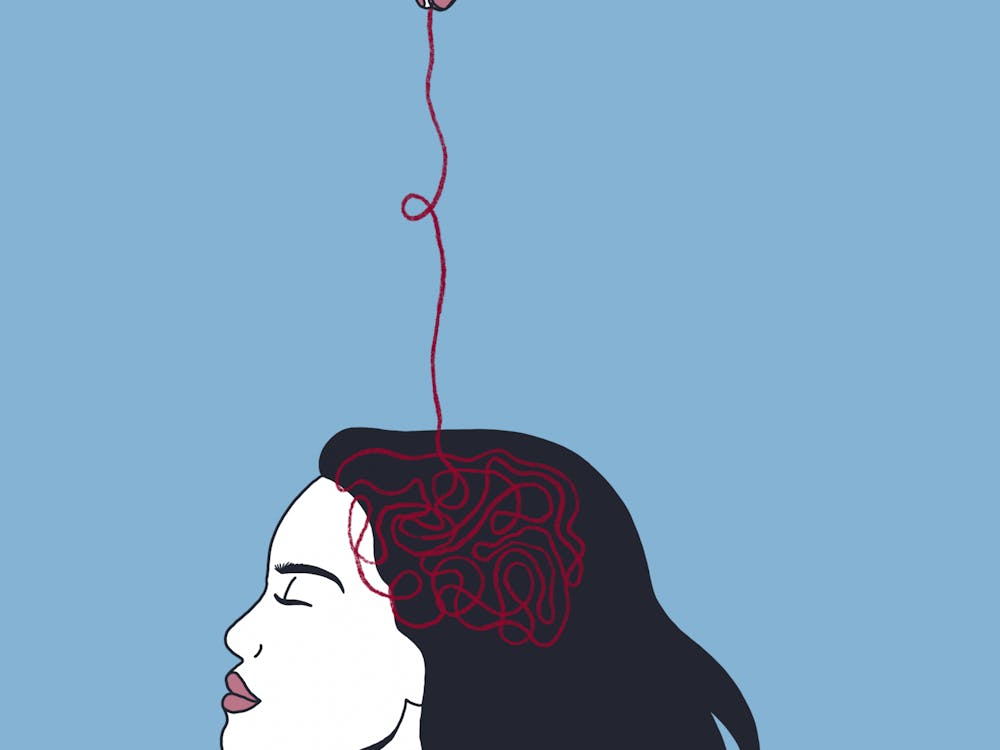As a Predominantly White Institution, the University has had a student population that consists of over 50% White students since the very first days of its founding in 1819 — which welcomed White numbers well over the 50% base. Although a lot has changed since then, including the gradual and oftentimes contested admittance of historically underrepresented students into the school’s many programs, this fact remains the same.
Keeping these statistics in mind, the importance of diversity should be pushed to the forefront of discussion amongst admission leaders, administrators, professors and students alike. It is integral that the University learns how to and finds a passion to further increase and welcome diversity into our community. Diversity and equity are ongoing topics that are about more than just rising percentages. They are more so about the feeling of community and inclusion that all students hope to find on Grounds as well as the establishment of support systems for all students — especially those who might not have received any in the past.
A brief history of integration at U.Va.
It wasn’t until 1889 and 1897 that records of the first Japanese student and the first Chinese international student respectively emerged at the University. Following these admissions, it took decades for the University’s graduate programs to begin to enroll a few Black students each year after a Black Law student, Gregory Swanson, gained enrollment in 1950. Two other Black students were enrolled later that same year following Swanson’s admission.
Other examples of racial minorities attending the University throughout this time period are few and far between.
Seen as momentous admission decisions at the time, this handful of historically underrepresented students did not immediately usher in a diverse University nor community demographic. Furthermore, the treatment of these few minority students proves that “community” and “inclusion” were not terms that might encapsulate their time spent studying at the school.
In a 2017 interview with Virginia Magazine, Wesley Harris, a Black Engineering student who graduated in 1964, recounted how hostile the environment was during his time at the University, despite supposed federal changes to collegiate school systems at this time, which ultimately promoted the idea of “separate but equal.” When Harris was a student, the only restaurant who would offer him service on the Corner was the University Cafeteria.
By the year 1991, the University had enrolled 1,366 Black students, 914 Asian students, 143 Hispanic students and just 16 Native American students in its undergraduate programs for the fall. In 2001 — exactly one decade later — the University enrolled 1,368 Asian students, 1,168 Black students, 324 Hispanic students and 48 Native American students comparatively.
These numbers from 1991 and 2001 show an overall rise in diversity at the University since the early days of its founding — however, there is a noticeable drop in Black student enrollment within the same 10 year time period. Compared to the staggering 8,489 and 8,860 white students enrolled in 1991 and 1992, respectively, the aforementioned numbers of statistically underrepresented students are almost negligible with totals of 2,439 and 2,908 minority students from the aforementioned categories making up a mere 22 percent and 25 percent of the total combined Black, Asian, Hispanic, Native American and white students.
The University has continued to expand on its mission to welcome more diverse perspectives by welcoming its most diverse class this fall. The question remains, however, whether rising numbers are enough to prove true diversity and inclusion without the additional presence of supportive programs, systems and communities. “Diversity” might seem to be just a few numbers in a demographic study, but it ultimately requires much more than admissions numbers to students from underrepresented backgrounds.
Diversity on Grounds
Despite this gradual rise in demographic numbers over time, the image of diversity from the point of view of students on Grounds can look different based on what organizations and communities they find themselves becoming involved with during their undergraduate years.
For third-year Engineering student Sarah Bhargava, volunteering for a cultural-based program this fall opened her eyes to what the true range of diversity could look like at the University. Bhargava notes that she notices a clear difference between the diverse makeup of the event and what she sees as an everyday student studying and hopping from class to class.
“I was involved in setting up for Culture Fest,” Bhargava said. “[In] that moment, I thought that U.Va. was very diverse, but definitely like on the day to day as you walk around grounds and see people it's not as diverse, as perhaps, I think relatively compared to other schools.”
Other students, such as Natalie Cordero, fourth-year College student and Latinx Student Center intern, and Rafael Escotto, fourth-year College student and Multicultural Student Center intern, shared Bhargava’s belief that the University could be more diverse.
They also note the possible toll that a lack of diversity can have on students.
“It wasn't until coming to U.Va that I noticed that when there isn't that much diversity, there isn't that much that exposure to other cultures,” Escotto said. “I wasn't looking at organizations or programs like the Multicultural Student Center. But I think that's also just one of the consequences when you have such a large school that isn't too diverse. Sometimes it can be slipped out of your consciousness.”
This point brings to light that oftentimes, at large institutions, resources for minority students can easily get swept under the rug. The perspectives granted by these students prove that diversity is oftentimes more than a number compiled each semester — it is what we see, what is offered by school programs as a symbol of community and acceptance and what we see or feel on a day to day basis.
Even in regards to these oftentimes concealing statistics that suggest a steady growth of diversity over time, enrollment within specific racial groups doesn’t always reflect the general diversification of the community as a whole. In particular, both Native American students and Black students have seen demographic changes at the University that do not mirror the overall trend.
In fall 2020, just 15 American Indian or Alaskan Native students were enrolled on Grounds as undergraduates. Although there are new and different categories for race-identification as a result of the 2009 IPEDS change in definition of race and ethnicity, compared to the overall increase in student acceptances, the overall percentage of Native American students within the undergraduate student body remains lower than in 1991 at just 0.08 percent. There has also been a 1.65 percent decrease in undergraduate students who identify as Black at the University since 2009.
Alternatively, since 2009 to 2020, the percentage of Asian American, Hispanic American, and multi-racial undergraduate students on Grounds has increased by 4.98 percent, 2.13 percent and 4.36 percent, respectively. In addition, there has been a decrease in White undergraduate students at the University from 60.64 percent to 55.67 percent.
Some of these decreases could be explained by an increase in students who identify as Multi-racial.
However, as Teresa Pollock — a Monacan Nation citizen who sits on numerous committees about the inclusion of Virginia indigenous tribal nations within educational and community settings — noted, if there are no support systems in place to aid historically underrepresented groups at the University, fewer admitted students will choose to enroll. This is another possible explanation to the decrease in Native American and Black students throughout this time period who have more often than not been unsupported by the University.
Even if the University does offer admission to a large percentage of students who are considered to be a minority, when support systems are not readily available to them, enrollment will not feel like an attainable option. Support systems can include any institution that provides students with a network of peers, professors or others who all have a united goal of helping these students grow and find comfort. The absence of these aforementioned programs can heavily affect the makeup of the student body in a given year.
The importance of community
It’s evident that a lack of systems in place to support historically underrepresented students at the University, can ultimately have disadvantageous effects to these students' learning and health.
Although there is a consensus that there is more the University could do to foster diversity and equity among its student body, many students agree that they have still been able to find a good community on Grounds. For some it took time to find this community, while others joined, in their very first semester, an organization that quickly felt like a safe place.
“I remember going into the Multicultural Student Center for the first time when it was in the basement,” Cordero said. “I started bawling my eyes out because it was like the first time I met someone that kind of knew where I was coming from. And… I think I was like two weeks in and from there on I found my community.”
Both Bhargava and Escotto were also able to find communities within the organizations that they joined. They have both benefited from finding a place of comfort and understanding within the University's many programs.
Escotto in particular, who is also a member of the Afro Latino Student Organization on Grounds, notes how it took him years to find his friend group and community within the organizations he is now a part of.
“I found a great community in U.Va.,” Escotto said. “It took me about two years … But I think this third year, even with COVID I found I could make my place in U.Va. start to feel a lot more comfortable now that I was in these orgs. And getting that exposure that I was so used to [where I grew up].”
Although thankful to have found a community and support system here at the University, Escotto’s story reminds us that although these safe spaces are always available to us, it ultimately falls on students themselves to find and utilize these resources individually. For Escotto it took half of his undergraduate years to find these communities on Grounds, but for many others it may take longer or even entirely evade a student’s knowledge until after their graduation has passed.
Although the University has made significant strides towards their ongoing goal of diversification and acceptance as highlighted by these examples, support systems and communities must not be just put into place for historically underrepresented students. They must also be publicly promoted and encouraged to ensure long term and lasting change, as well as accessibility.
Progress and steps forward
Over the last twenty years, the University has begun to take on more expansive initiatives towards the goal of fostering a welcoming and diverse environment on Grounds. Not only have they sought measures to aid students of color, but they have also taken action to help many other historically underrepresented groups on Grounds as well. This includes the opening of the LGBTQ+ Center two decades ago in 2001.
Another integral step in regards to racial diversity was the opening of the Multicultural Student Center in 2016. The goal of this center is to support racial minorities within the student body of the University. The idea for the MSC was initiated by a student group called the Multicultural Student Center Initiative, who formed in fall 2014.
The space was previously located in the basement of Newcomb Hall, but its headquarters were completely redesigned and moved to a much more spacious location on the second floor. This new space in Newcomb Hall would not exist today without the group’s intense advocacy, research and focused assessment of student needs that went into their official proposal.
The MSC has since expanded its facilities to include both a Latinx Student Center and an Interfaith Student Center which are located in Newcomb Hall. Both of these spaces opened their doors to students in February 2020 — prior to the start of the pandemic and rapid transition to remote learning. While the LSC’s main goal is to support Latinx students and culture within the University community, the IFSC’s aim is to create a space in which students of every faith and background can practice their spirituality in a safe and learning-based environment.
Cordero traced the LSC’s opening back to her very first year on Grounds as a part of the Latinx Leadership Institute.
“The center for sure was an effort of our community for a very long time,” Cordero said. “My group presented on the need for this space, and kind of after two years being able to see that come into fruition…I feel like there's still a lot of work to do."
Students aren’t the only ones involved with a push for inclusivity at our University and the term community can oftentimes be about more than just a tangible space.
In reflecting on her recent meeting with President Ryan in which he met with the chiefs of the Virginia tribal nations, Pollock brings up another important aspect of how the University community or participants in any education system can grow as learners and community members by understanding history through the lens of those whose voices are often kept silenced.
It is important, Pollock said, to challenge misteachings that are ingrained in our current school curriculum for the sake of truly understanding the people around us and the land we are on. Learning these truthful lessons will help the University and many other institutions learn how to best support those who are often under-supported or underrepresented in both an educational and community setting. However, in order to continue spreading the truth, these people need the same opportunities and support as any other student at the University during their time spent on Grounds.
“It is gonna take time to change the infrastructure of how we teach and what we teach,” Pollock said. “You need to have people who have an education background, you know, teachers or administrators… [and] again, if you don't have Native students who are in the pipeline to go to college, you don't have the Native people to help facilitate these programs.”
Looking ahead, students identify a number of things the University could expand upon to continue diversifying the community. Members of cultural organizations, interns at the MSC and other advocates in the community all see room for growth within the University’s ever present mission of diversity and equity.
“One of the things we're working on and have been working on in Asian Student Union is getting us a room,” Bhargava said. “Similar to the MSC but something for Asian Americans in particular.”
These efforts — put into place by the ASU and fifteen other organizations who determinedly signed on in strong support of this goal — have been rewarded with a promise from Interim Dean of Students Julie Caruccio that a process for their request will be implemented by the end of the semester. This process will help these students gain the necessary space to build the center.
For the rapidly growing cultural organizations on Grounds, having a specific and safe space for each individual community is important. Not only would it give each club a more personal gathering space for general meetings, but it would also extend the idea of comfort and community past just these meetings and disperse it throughout day to day life. Problems such as lack of space often emerge in these efforts, but it does not diminish their importance nor cancel the possibility of their emergence.
Although there is evidently no shortage of student and community advocacy for spaces and other programs around Grounds that can support and represent minority students, it is an effort that should be actively pushed for and recognized by the University at an administrative level as well. It is inarguably rewarding to see students fight for what they believe is needed, and eventually win. However, the basic need for comfort and community at a PWI should not be something that needs a constant push from the student body in order to be granted allowance.
This concept of making active efforts will continue the progress that has been made this far and ensure that the University sets the tone for future expectations from its students and staff in regards to equity and inclusion. Since diversity has been and will continue to be a systemic issue, efforts to better equify the University community will be a continuing and necessary endeavor long into the future.







